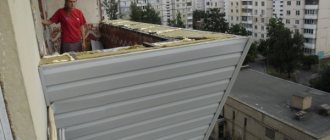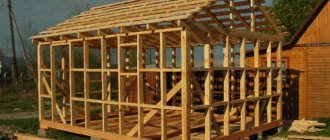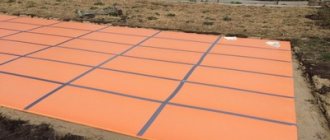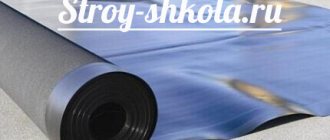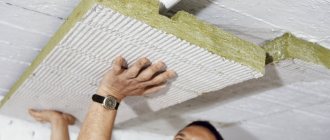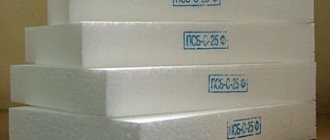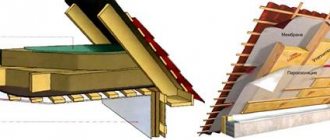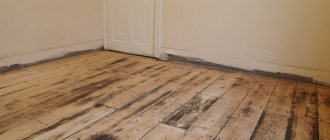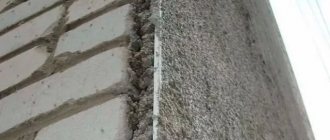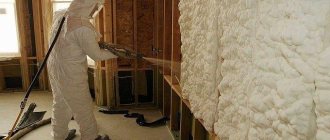What materials are non-flammable?
The group of non-combustible materials includes those that, when exposed to an open flame, retain their original state.
At the same time, they do not ignite, do not char, do not smolder and do not contribute to the spread of fire. The Technical Regulations on Fire Safety Requirements of 2008 serve as a regulatory source that classifies substances according to the degree of fire hazard. The main material on this issue is contained in Article 12 of this document. Additional information on fire and explosion hazards is contained in GOST 12.1.044-89.
In accordance with these regulations, the flammability group refers to the parameters that determine the combustion of materials under different conditions. It should be noted that:
1.
The category of non-combustible substances includes compounds that are not capable of burning in a normal environment.
2.
There is a group of substances classified as non-flammable, which upon contact with air or water become explosive and fire hazardous. This group also includes compounds that have the chemical properties of powerful oxidizing agents. To accurately determine the properties of materials and assess their fire resistance, it is necessary to find out their composition and what characteristics the substances of which they are composed have.
During certification activities and examination, the working and chemical properties of the tested substances are accurately established. The results obtained are taken as the basis for the development of GOSTs, technical conditions for the operation of enterprises, the issuance of a certificate, and the development of fire safety measures at the facility.
Types and characteristics
The fire resistance limit of a fabric is determined by its composition. Thus, high-tech quartz fabric can withstand extreme temperatures up to +2000°C. It’s not for nothing that astronauts’ spacesuits are made from it.
Silica
They are made from synthesized silicon dioxide; their characteristics are close to ultra-strong materials made from quartz filaments. Operating temperature range – from -60 to +1100°C. Reliably protect from fire, hot steam, molten metal, aggressive acids, and electrical discharges. Absolutely non-toxic.
Fiberglass
Lightweight, flexible, yet extremely durable. Woven from thin fiberglass, the structure resembles artificial silk. They can withstand sudden temperature changes (from -200 to +700℃), have low electrical conductivity, do not shrink, and are environmentally friendly.
Basalt
The fiber is obtained from volcanic rock by melting. This is a unique fabric: fire-resistant, with excellent electrical and thermal insulation characteristics, chemically resistant, antibacterial. At the same time, it is environmentally friendly, durable and inexpensive to produce.
Asbestos
Asbestos is a natural mineral from the silicate group, refractory, wear-resistant, as strong as steel. However, in the last few decades it has been used less and less due to its high carcinogenicity. Only chrysotile asbestos is considered relatively safe. Non-flammable fabric is used in the production of thermal insulation products, but it is not recommended to sew work clothes from it.
Carbon
Made from organic and synthetic carbon fiber. Carbon fiber is not afraid of chemicals and cannot be deformed. Compared to quartz or silica textiles, it is not as heat resistant (limit +370℃). However, the disadvantage is eliminated with the help of catalysts and special heat treatment.
Aramid
Manufactured from fire-resistant fibers derived from aromatic polyamides. Synthetic material does not burn or melt: at high temperatures (up to +400°C) it chars and gradually disintegrates. The strength class is equal to armor steel, while being unusually light and elastic.
Polyester
They are found everywhere: these include the familiar polyester, microfiber, lavsan and acrylic. Heat-resistant fabric does not flare up, but smolders, and begins to melt only at +250°C. Does not wrinkle, does not stretch, does not fade in the sun, is easy to clean and does not wear out for a long time.
Impregnation
This is the name of the method of treating textile fabrics with a fire retardant (fire retardant) solution. As a rule, fireproof impregnation is applied in a factory setting. It is important to consider that the effect of fire retardants decreases over time: after a year, the treatment will have to be repeated.
Scope of application
The main goal of determining the degree of flammability of substances lies in the practical field.
The results of this activity are usually used in the construction and landscaping industries. The combined use of flammable and non-flammable substances will ensure high fire safety in combination with moderate production costs. The materials used in the construction industry make it possible to ensure safe operation of buildings after completion of construction. Non-flammable materials for bathhouses can reduce the risk of fire to acceptable levels. An example is the active use of hollow materials in construction.
Brick with voids inside the structure is especially often used in this capacity. In addition, it is used as a non-flammable material for stoves in low-rise structures. It should be remembered that the contact points of chimneys and stoves connected to combustible structures must be insulated using fire retardant compounds: mastic, plaster, sealant.
Non-combustible material for the chimney must be insulated at the junction with flammable elements. In the construction industry, hazardous materials are actively changing to compositions that are stable and resistant to fire. Traditional wooden floor construction has been almost completely replaced by conventional screed in combination with floor ceramics or non-flammable linoleum. Non-combustible materials for finishing walls and ceilings are widely used both in low-rise construction and in apartment buildings.
Materials based on wood and wood shavings are being consistently forced out of the construction industry. Usually these materials are replaced with block elements, for example, tufa blocks or foam concrete products. Non-combustible sheet material is used as finishing panels, both internal and external.
To insulate walls, ceilings, and floors, roll and sheet materials based on basalt and other mineral fibrous compositions are used. These products are characterized by high fire safety and are used:
- for insulation of technical openings intended for windows and doors;
- to ensure thermal insulation of the outermost floors, roofing structures, and floors of the room;
- for insulation of upper superstructures and attic floors;
- in order to ensure thermal insulation of pipelines for various purposes, including water pipelines, gas pipelines, wastewater discharge systems, cylindrical structures or rolled samples are used as heat-saving elements;
- Fibrous mineral compounds are also used for sound insulation in premises for various purposes.
Various metal structures also have a high degree of fire safety. This number includes:
1.
Cast iron and steel used to create tubular products, industrial and construction equipment, and fittings for pipelines. Cases for machines and equipment for various purposes are cast from these metals, and they are used for the production of engineering equipment.
2.
Conventional steel is actively used for the production of fittings for construction fittings. Steel is used to create elements of supporting structures for structures for various purposes.
3.
Copper, aluminum and various alloys based on them are used as conductive materials in the energy sector.
Why are fireproof sheets needed?
Current fire safety standards for brick stoves are located at a distance of 0.32 m from the walls, for steel lined structures - 0.7 m and not lined - 1 m. For small premises, it is simply impossible to comply with fire safety standards, then fire-resistant non-flammable sheets are used material. It protects walls, floors and ceilings from smoldering or fire when exposed to fire sources and high temperatures.
Classification of materials
The main document defining methods for classifying materials by flammability classes is GOST 30244-94. This regulatory act sets out methods for testing materials and distinguishes two groups:
- non-flammable "NG";
- flammable "G".
The non-flammable group includes compounds that can withstand the following tests:
- reduction in the mass of the substance being tested - no more than 50%;
- the temperature should rise by no more than 50%;
- Stable burning time with open fire is up to 10 seconds.
All types of materials that participated in the tests and did not pass even one of the criteria are classified as flammable. Construction objects also differ in fire resistance. Among this category, two types of development can be distinguished:
1.
All structural parts are made of non-flammable compounds.
The main load-bearing elements have a maximum degree of fire resistance, allowing them to withstand up to 2 hours of exposure to an open flame. 2.
The difference in the second category is the use of metal structures that are not treated with fire protection. Metal elements should be used to create openwork elements of trusses, beams and other samples in the roof area of a building. In this case, the fire resistance limit will be 1.5 hours.
Objects that meet the above fire resistance requirements to the greatest extent meet fire safety standards. As an additional classification of non-flammable compounds used in the construction, reconstruction and repair of structures, several types of division are used.
Depending on the type of product produced, substances are divided into:
- produced in the form of a roll, tile, technological sheet;
- in the form of a bulk substance;
- in the form of rigid elements, such as metal trusses or reinforced concrete slabs.
Depending on the purpose of the product:
- finishing decorative materials, for example, tiles for various purposes or wall panels;
- building structures produced in finished form, for example, slabs, bricks, floors;
- bulk materials for various purposes, heat-insulating and sound-proof molded products.
Thermal insulation for pipes
In the absence of insulation of pipe outlets, due to a large temperature difference in places where combustion products are discharged, condensation may form, which can destroy adjacent parts of the wooden structure.
In addition, well-insulated exhaust channels will work much more efficiently, preventing heat from escaping from the room.
Depending on the design of the chimney, a variety of materials can be used for its thermal insulation. The most common type of non-flammable insulator suitable for pipe insulation is double-wall pipes (sandwich) made from stainless steel.
To preserve heat in the bath and insulate pipe bends, special non-flammable ceramic sections mounted in expanded clay concrete modules can also be used.
Mandatory protection of the interior spaces of bathhouses from exposure to high temperatures and humidity has two goals. Firstly, this ensures the safety of the wood surfaces inside and, secondly, it increases the operational safety of the entire structure as a whole.
Types of substances
It is customary to distinguish three main types of non-flammable substances of different origins.
The first type includes solid materials presented in various structural and aggregate states. These can be bulk substances, structures, and individual piece products. This number includes:
- various rock samples, both hard and softer, including limestone, dolomite, marble;
- concrete and reinforced concrete products;
- loose rocks, including gravel, sand, crushed stone;
- binders - chalk, clay, cement, gypsum, lime, plasters, mortars;
- cast iron and steel products of various types and designs - angles, channels, beams;
- non-ferrous metals, including bronze, copper, brass, aluminum alloys;
- mineral fibers, such as basalt;
- various types of textile materials, including asbestos fabric, basalt fiber;
- regular and fire-resistant glass.
Liquid substances:
- foaming agents and detergents;
- all types and conditions of water, from a drinking source to use as a coolant;
- synthetic liquids that cannot burn;
- acids, alkalis, salts in the form of an aqueous solution.
Gaseous substances:
- carbon dioxide;
- nitrogen;
- freon;
- argon.
Requirements for fire safety of materials
The modern regulatory framework is not limited to one document regulating the fire safety of substances and materials. The list of main documents includes: 1.
GOST 30244-94 contains information on the procedure for testing building materials susceptible to fire.
The norms of the document do not apply to paint and varnish products, granules, bulk substances, and solutions used in construction. 2.
GOST 4640-2011 regulates the conditions for the production of mineral wool from rocks of various origins, slag waste from metallurgy, and silicate materials.
The main area of application of fibers is construction. 3.
NPB 244-97 contains standards relating to finishing and facing materials, waterproofing, roofing samples, floor coverings.
4.
GOST 32313-2011 regulates the quality of products of various shapes made of mineral wool, made in the form of slabs, mats, cylinders with and without the use of metal.
Used in industry and construction to impart thermal insulation properties. 5.
GOST 21880-2011 defines the technical conditions for the production of mats used for thermal insulation of housing and communal services and industrial buildings.
Products are produced using stitching technology. 6.
GOST 32603-2012 regulates the production of metal panels using insulation based on mineral wool.
7.
GOST 32314-2012 contains information about products made from mineral wool. The scope of application of the products is the construction industry.
The standards contained in these regulations do not limit the requirements for materials to fire resistance alone. The documents also contain other characteristics of the compositions used in the production field:
- resistance to various deformations after heating or exposure to water;
- moisture resistance and hygroscopicity;
- thermal conductivity qualities;
- ability to withstand mechanical loads, including tearing and bending;
- specific viscosity of a substance.
Non-combustible substances and materials in a cold state demonstrate completely different qualities than when exposed to an open flame.
It is important to establish the suitability of a particular structure for use as a reliable link capable of withstanding design loads, including exposure to open flame. Added: 05/19/2020

